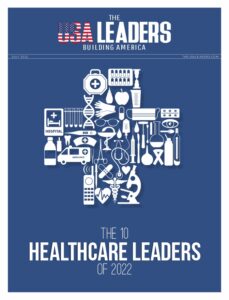The phrase that gives any team the sweats is an AI training for employees. They’re going to have to learn to code, aren’t they? They’re going to lose their jobs, right? This is just another one of those things that sound so futuristic but feel so impractical. Here’s the best part: AI automation training isn’t about replacing your employees, it’s about enabling them.
With the proper training program, employees shouldn’t be afraid of AI. They’ll be embracing it. And that shift begins not with technology but with attitude.
Why Employee AI Training Is Important Now
Executives aren’t the only ones who need to know AI. Across the organisation, from HR to marketing to supply chain, everyone needs to be conversant in what AI can do, what it can’t do, and how it can make their work easier, faster, and more rewarding. AI training for employees ensures that the tools being deployed aren’t only powerful but also usable. After all, what’s the value of deploying AI systems if your workforce isn’t ready to use them with confidence?
Don’t teach AI as a tool. Teach it as a thought process- The best AI automation training doesn’t begin with software tutorials; it begins with reframing. What tasks do they find repetitive and tedious? What choices occur too slowly? Where are we short on insight because we’re too reactive? With good training, workers start to see automation opportunities independently, and that’s where true innovation occurs. This transformation turns AI from something to fear into something empowering.
Who Needs AI Training? (Hint: Everyone)
You don’t need to be a data scientist to profit from AI training. If your employees:
- Use data
- Engage with customers
- Work on documents, schedules, or decisions
- Have repetitive or routine tasks?
Then they’re already making use of manual systems that AI could streamline. From frontline workers to mid-managers, employee AI training ensures everyone learns how to work with AI, not around AI.
What Entails an AI Automation Training & Working Principle
The perfect AI automation training draws upon actual examples from your sector. It doesn’t require people to have from technical background. Your employees would get hands-on experience based on real-time requirements. Moreover, it emphasizes thinking about how, rather than how to click. And it fosters feedback, templates, and community for a holistic outcome.
Courses such as the one provided by AI First Mindset merge strategic thinking with easy execution steps. With time, your staff learns quickly and implements sooner. But the question arises- how does it work?
Here’s what the process looks like when done correctly:
- Intro modules: What is AI? What’s hype, what’s reality?
- Workflow mapping: What in your day could be automated?
- Tool demos: How do common AI tools work (without deep tech)?
- Project practice: Test a real-world automation idea.
- Feedback loops: Discuss, adapt, and improve the idea.
By the end, employees are no longer spectators. They’re participants in transformation.
Benefits Beyond the Training Room
Once employees complete the automation training, here’s what shifts:
- More confidence in using AI-enabled tools
- Fewer concerns about “being replaced by technology”
- Improved morale from work spent on creative, high-value activities
- More rapid project delivery
- Greater internal cooperation among teams
And with training AI automation, you create a workforce that doesn’t wait for change to happen. They drive it.
How to Implement AI Without Generating Resistance
Change is difficult even when it’s beneficial for individuals. Here’s how to prevent resistance when implementing training:
- Engage managers early: Excite them so they can evangelise their teams.
- Simplify outcomes: “This will allow you to do X quicker” is more effective than “Let’s learn AI.”
- Begin small: A 3-hour session with concise use cases is superior to a 3-week bootcamp with ambiguity.
- Provide optional advanced tracks: Allow the interested ones to dive deeper without bombarding the others.
Remember, employee AI training isn’t spewing out information. It’s building trust.
The Business Growth Role of AI Automation Training
Your employees, once trained, become AI scouts within their departments. They’ll assist you:
- In revealing inefficiencies you never knew existed
- In pilot-testing automation concepts before investing big
- In establishing a data culture from the ground level
- In backing leadership initiatives with informed support
AI automation training is like planting seeds. The ROI is realised when they become scalable, employee-driven innovation.
Still Concerned They’ll Struggle? The Right Partner Makes It Simple
With the right partner, like AI First Mindset, you receive:
- Role-specific training modules
- No-code, no-jargon teaching
- Actual examples from retail, logistics, finance, and more
- Flexibility to train in batches or across departments
- Post-training support, so learning doesn’t end after the session
They assist you in working with the team you have, as opposed to the team you would like to have.
How to Know If Your Employees Are Ready
Ask yourself:
- Are they tediously doing things that can be automated?
- Are they disheartened by data they don’t know what to do with, or aren’t allowed to use?
- Do you catch “I wish we had time to” a lot?
- Are they bending legacy tools into shapes that slow things down?
If so, then employee AI training won’t merely assist; it’ll transform their workday. So what can you expect from them post-training? They’re more likely to:
- Propose automation pilot ideas
- Feel more connected to innovation
- Assist in shaping implementation for actual users
- Inspire colleagues to experiment with AI tools
- Support accelerated digital maturity
When an automation training is paired with internal curiosity, you get something remarkable: an organisation that learns and moves quickly.
Conclusion: AI Isn’t Just for the Tech Team. It’s for Everyone.
Whether your employee is in operations, HR, finance, or sales, they have a role in your AI journey. With AI training for employees, you’re not just teaching them how to survive AI; you’re showing them how to lead with it. With AI automation training, you’re not just fixing a workflow; you’re reimagining your business. And with the proper partner, such as AI First Mindset, you don’t need to begin large to begin smart.
Your team is prepared. The question is, are you prepared to train them appropriately?
Also Read: Leadership Training Programs That Build Resilient, Future-Ready Leaders





















